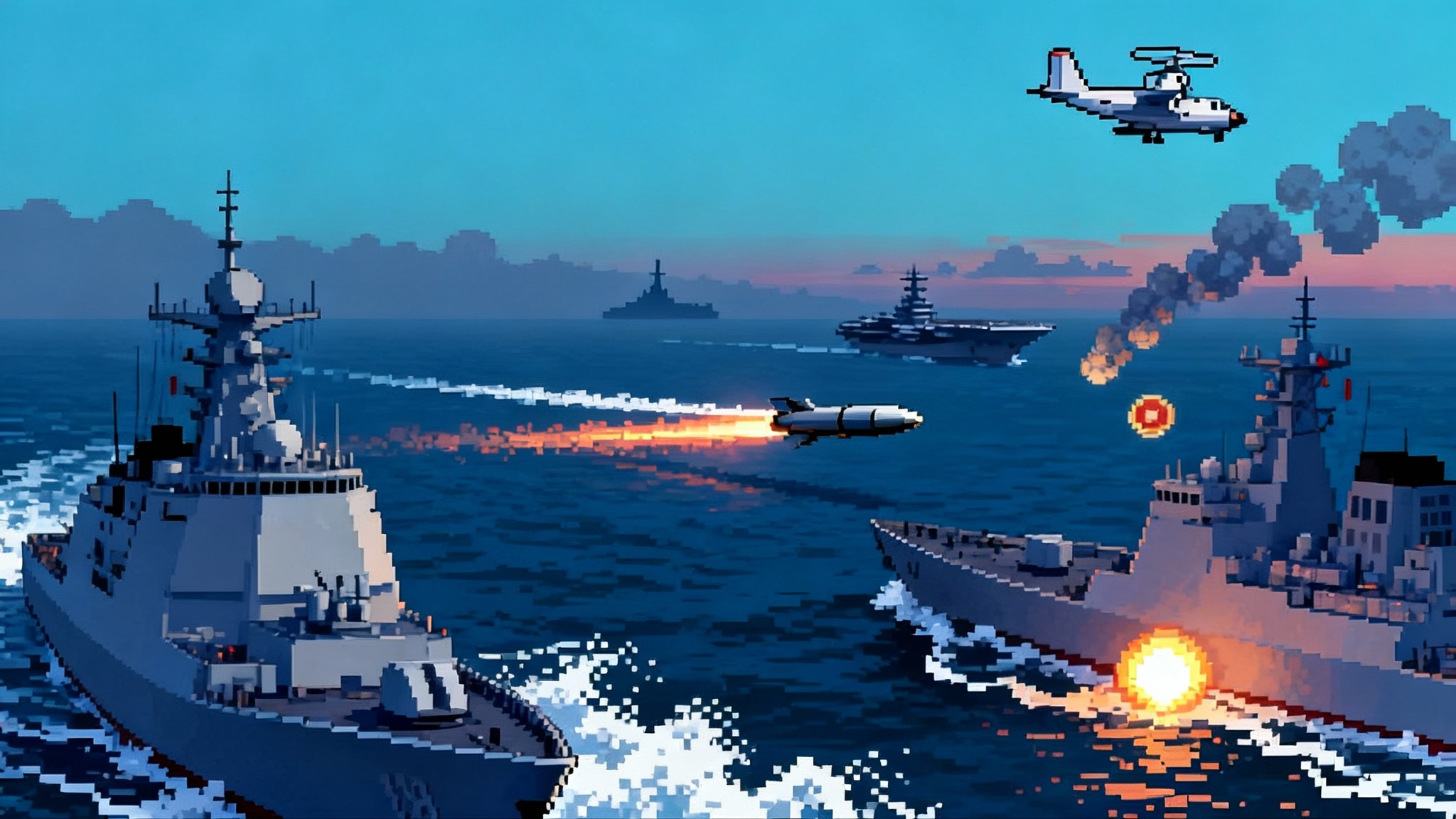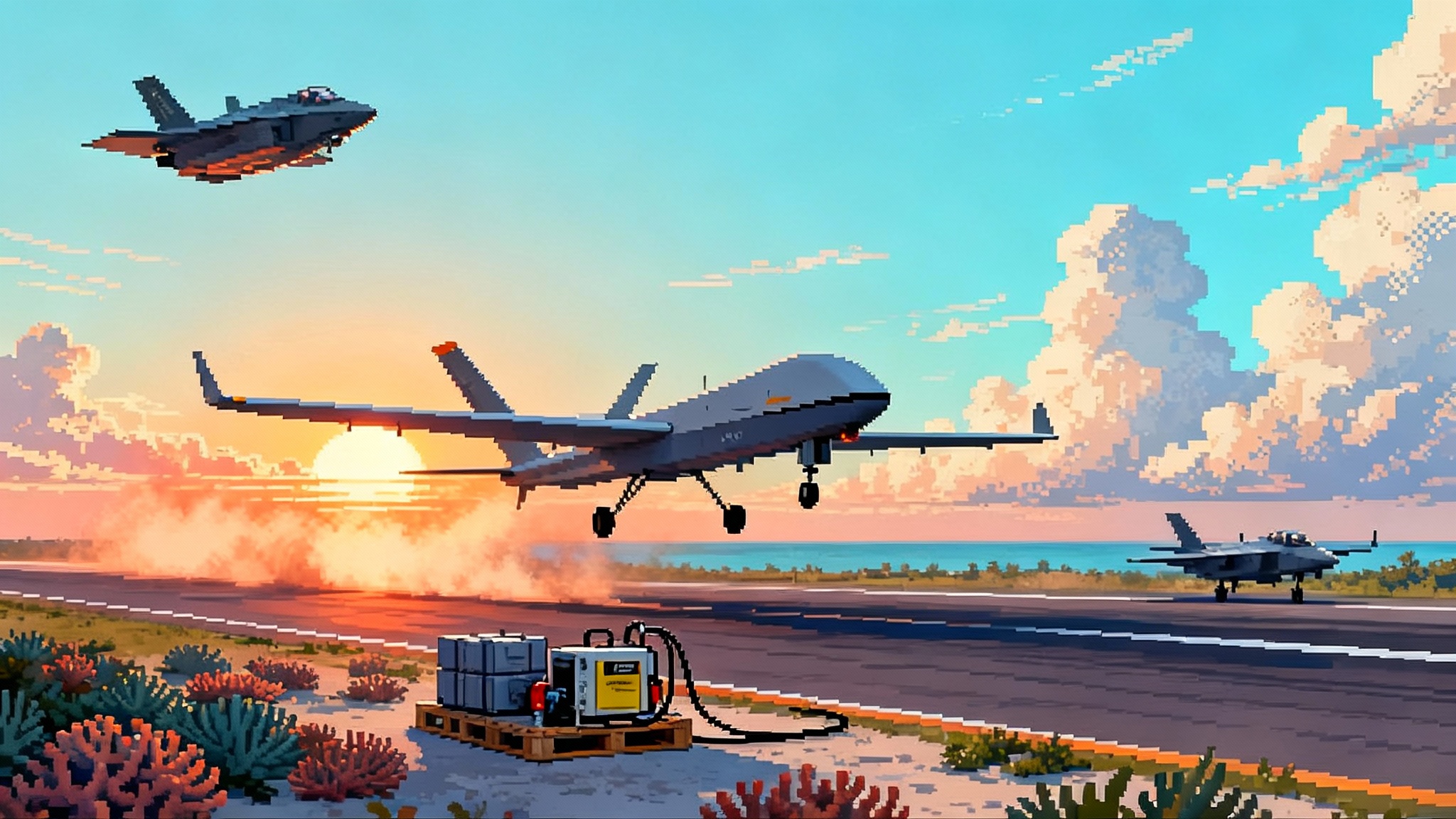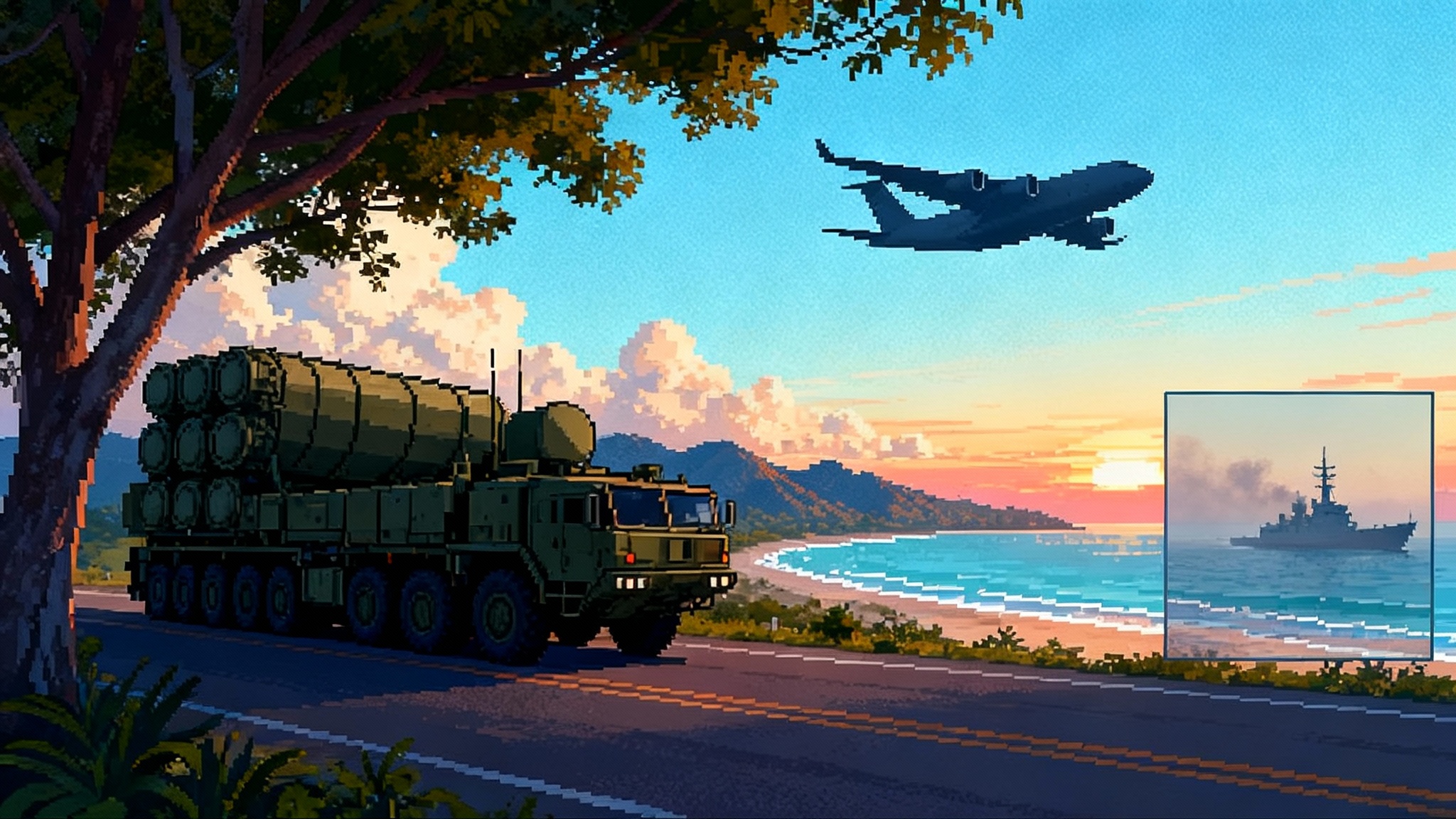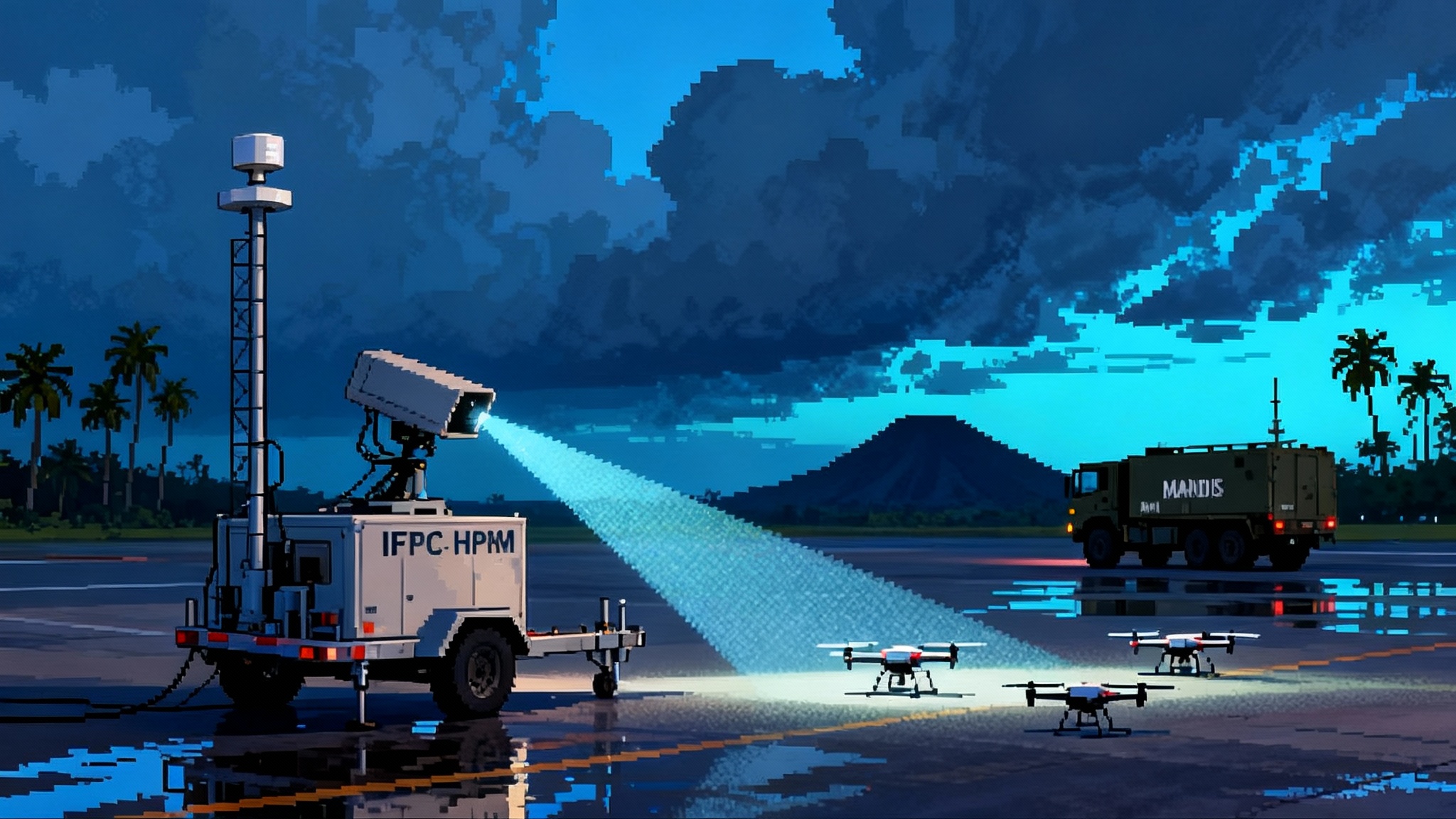China’s New Hypersonic AShMs: Beyond Parade Hype to Reality
Beijing rolled out the YJ-17, YJ-19, and YJ-20 on Victory Day, but physics and kill-chain friction decide what truly threatens a carrier. This analysis maps likely performance, realistic timelines, and how Aegis with SPY-6 and SM-6 can blunt the risk.

The reveal is not the reality
On September 3, 2025, China used its Victory Day parade to showcase a new trio of anti-ship missiles. YJ-17. YJ-19. YJ-20. The message was simple. Carrier killers are multiplying. The imagery was sharp and the claims were bold. International coverage highlighted the names and the framing, including a Reuters breakdown of the parade lineup. Chinese state media cast the systems as new pillars of sea denial, and Xinhua labeled them hypersonic missiles. Public reveals matter. They inform doctrine and signal priorities. They do not guarantee performance.
This piece cuts through the pageantry. We start with what physics allows. Then we assess timelines to real capability. We map how these missiles could slot into the PLA’s sensor to shooter chain. Finally we quantify the stress on U.S. and allied fleet defenses. That means Aegis. SM-6. SPY-6. It also means the less glamorous parts of survivability. Deception. Dispersion. Logistics and magazine depth.
What the missiles appear to be
Parade viewing is not flight-test telemetry. Yet there are clues.
-
YJ-17 likely sits in the aeroballistic class with a hypersonic glide vehicle. Think boost to high supersonic or hypersonic speed, then an unpowered but maneuvering glide in the upper atmosphere. The strengths are high endgame speed, cross range maneuver, and a steep terminal approach that compresses defender reaction time. Weaknesses include heating, seeker window survivability, and the challenge of maintaining target-quality updates against a moving ship.
-
YJ-19 appears to be a scramjet cruise missile. It would cruise within the atmosphere at sustained hypersonic speed on an air-breathing engine. The strengths are long time on hypersonic profile and potential for weaving terminal trajectories. Weaknesses include intake management, thermal protection, and complex engine control across variable altitudes and speeds.
-
YJ-20 remains the least constrained by open data. The designation implies an anti-ship role. Its form factor and transporter suggest a large missile with room for propulsion and seekers. The most conservative reading is an advanced anti-ship system that may blend elements from China’s mature anti-ship ballistic lineage and its newer hypersonic programs. Until there are credible flight-test disclosures, precise performance is speculation.
Chinese coverage presented the set as hypersonic. That label covers very different engineering realities. A 500 kilometer scramjet at Mach 6 has a different radar cross section and thermal signature than a ballistic booster lofting an HGV that dives at Mach 8. Defenders will need to tailor counters by type. Lumping all as carrier killers blurs important distinctions.
What physics and engineering suggest
Hypersonic systems fight two enemies. The defender and the air. Aerothermal loads at Mach 5 to Mach 10 limit time at speed and stress sensor materials. Seeker windows must survive and remain transparent to the sensor’s band. Data links must push through ionization or be designed around it. Every change in speed or altitude trades range for maneuver.
-
Aeroballistic HGV profiles like a notional YJ-17 are efficient at covering distance fast. They can also change aim point late. The price is guidance complexity. An HGV hunting a ship must receive frequent updates to correct for the target’s motion. It also needs an endgame seeker that works in a high heating environment. That seeker must distinguish the real hull from decoys and clutter on a hot sea background.
-
Scramjet profiles like a notional YJ-19 can fly lower in dense air. That shortens radar horizons for defenders and narrows reaction windows. It also increases drag and heating. Range claims at very high Mach numbers usually assume optimal altitude and efficient throttle schedules. Real missions face weather, countermeasures, and dynamic routing that shrink theoretical reach.
-
Any YJ-20 concept that suggests dual-mode or hybrid propulsion will grapple with integration. More modes add flexibility. They also add failure modes. Integration often takes longer than propulsion or guidance alone.
Bottom line: Hypersonic anti-ship weapons are feasible and dangerous. Their hardest problems are not solved by airframes alone. They are solved by the kill chain that feeds them and by seekers that survive until contact.
From parade to operational units
A reveal is not an initial operational capability. The road to fleet service has predictable gates. Captive carry or ground firings. Early flights on fixed trajectories. Progressive envelope expansion. Seeker tests under heating. Integration with launch platforms and fire-control software. Training for crews. Secure, jam-resistant data links.
If these missiles were paraded after significant testing, a limited coastal battery IOC could arrive in the next two to four years. Ship and submarine integration follows later and tends to be slower. Air-launched integrations depend on pylons, center-of-gravity, and mission computer work. They also demand aircrew tactics development. None of this is instant. China can move faster than many assume, especially on coastal batteries with organic targeting. It still must pay the testing bill.
The real decider is the kill chain
Hypersonic range only matters if the missile can find and fix a moving ship. That requires a layered surveillance and targeting network that the PLA has been building for years. Space-based ocean surveillance satellites can cue. Recent LEO constellations are building a LEO mesh rewrites kill chains that can shorten sensor to shooter timelines. Over-the-horizon radars can detect broad maritime movements. High-altitude drones and patrol aircraft can classify. Submarines, fishing militia, and unattended sensors can contribute fine-grain localization. Target-quality data then must flow back through secure links to a shooter and forward to the weapon in flight. A mobile carrier group complicates every step. It can maneuver. It can deny or deceive sensors. It can kill the spotter.
Key friction points for the attacker include the timeliness of updates and the security of the data links. A hypersonic weapon shortens the time window for the defender. It also shortens the attacker’s time to sense, decide, and transmit. If the PLA cannot close the loop fast enough, even a Mach 8 weapon can arrive where the target was, not where it is. That is why demonstrations against instrumented barges do not fully translate to combat against a maneuvering carrier group with jammers, decoys, and air cover.
Stress test for Aegis, SM-6, and SPY-6
Aegis with SPY-1 and now SPY-6 is a layered air and missile defense system. SPY-6 brings more sensitivity and better discrimination. It supports longer-range cueing and higher track quality in clutter. That helps against low flyers and against complex endgame maneuvers. It does not make physics go away. A low-altitude hypersonic missile can pop up or weave late. Reaction time compresses. Engagement timelines shift from comfortable to tight.
SM-6 remains the U.S. Navy’s most flexible surface-to-air missile. It can prosecute air-breathing threats, some ballistic targets in terminal mode, and it has an anti-surface punch. Against hypersonic profiles its role is to thin the raid and force the attacker to maneuver. That burns the attacker’s range budget and increases miss distance. No single missile provides a silver bullet. The value is in layered effects. Far and fast first shots to disrupt. Midcourse shots to attrit. Tight terminal shots to save what leaks through. Land-based launchers like Typhon land-based SM-6 deterrence extend options for distributed fires.
SPY-6 improves the early part of that sequence. More sensitivity means earlier detection of small sea skimmers and better track custody through clutter. It also boosts resilience to jamming. The defender still needs tactics that keep emitters survivable. Emission control and smart use of passive sensors remain crucial. You cannot intercept what you do not see. You also cannot see forever if the enemy is hunting your radar.
Carrier group survivability under hypersonic threat
A carrier group does not live or die on a single layer. Survivability is a function of geometry, deception, and depth. Geometry means operating outside or astride the densest threat rings while still generating sorties and fires. Deception means managing signatures. That includes emissions, visual profiles, and the signature of your logistics train. Depth means having enough interceptors, decoys, and shooters to fight through long raids. It also means allies and land-based support to distribute risk.
The air wing contributes in two ways. First by killing shooters before they fire. Second by carrying stand-in decoys and decoys that break the attacker’s picture. F-35C and E-2D networks extend the group’s eyes and let surface combatants launch weapons at longer ranges with better cues. Surface escorts with SPY-6 and upgraded electronic warfare suites can run complex deception plays. That may include towed decoys, active decoys, and expendables that force incoming seekers to waste energy and time. Every forced seeker decision is time the defender can exploit.
The group’s geometry matters. Dispersed formations reduce the value of any single cue and complicate massed targeting. Dispersed also means the group must be ready to recombine fires quickly. That demands robust command and control. It demands practiced shot doctrine across ships. It also demands logistics that can keep multiple nodes armed and fueled.
Counterplay against each missile type
It helps to think in families rather than one-size defense.
-
Against an HGV type like YJ-17 the defender should emphasize early cueing and cooperative fire control. The glide phase may be visible to wide-area sensors at altitude. That is the window to build a quality track, then hand off to shooters. Terminal defenses must account for steep approach angles and high closing speeds. Decoys that alter apparent aim points can add miss distance. So can offboard jamming that bends the seeker’s solution in the last seconds.
-
Against a scramjet cruiser like YJ-19 the problem is low altitude and speed at the same time. Radar horizon is the enemy of reaction time. The recipe is forward sensors, elevated pickets, and aggressive electronic warfare. Forcing a sea-skimming missile to climb to see through clutter helps you. Every climb costs it speed and range. Multi-ship cooperative engagement lets a shooter with the best geometry take the shot even if another ship made the detection.
-
Against a less-defined YJ-20 class the priority is hedging. That means diverse decoys. It means both kinematic and non-kinematic options ready to trigger on a range of terminal behaviors. You do not want a gap because the threat used a seeker band you did not plan for.
In all cases, layering matters. Electronic attack. Deceptive emitters. Nulka and other active decoys. Chaff and flares for band-specific effects. SeaRAM or ESSM for tight shots. CIWS for last chance. Lasers and high power microwave will add tools over time, but today they supplement rather than replace missiles.
How much stress is too much for magazines
A hypersonic raid stresses magazines more than the radar. You can detect more than you can shoot. That is why the United States and allies are buying more interceptors and exploring production partnerships. It is also why navies are experimenting with compact launchers for decoys and soft-kill tools that scale better than expensive interceptors. A defender that expends ten million dollars to kill a million-dollar missile can still win the fight, but it must win the economics of the campaign too. Replenishment and at-sea reload are not glamorous. They decide how long a group can stay in the contested zone.
Where the PLA’s kill chain may still be brittle
The PLA has more sensors than a decade ago. It has better fusion. It also faces real friction in the open ocean. Satellites have revisit gaps. Over-the-horizon radars have clutter and ambiguity. Airborne spotters can be hunted. Submarines are slow couriers of information. Jamming, deception, and kinetic action can peel away layers of the kill chain. If the United States and allies neutralize spotters and jam links, even the best hypersonic weapon will struggle to earn hits. That is the defender’s strategic aim. Force the shooter to launch on stale data. Force seekers to pick among ghosts. Work on joint networks such as IBCS plug-and-fight for NATO shows how cooperative engagement can thicken defenses.
Timelines to worry about
Near term concerns focus on coastal battery launches supported by local sensors. Those reduce kill chain length and increase shot quality. Ship and submarine launches that benefit from organic targeting come next. Long range air-launched profiles demand more integration and training. They can be very dangerous once mature. They also present more opportunities for interdiction before launch.
Indicators to watch in the next 12 to 24 months include real sea trials against moving targets, not just barges. Look for photos of integration on Type 055 destroyers or on bombers with modified pylons. Watch for satellite launches that expand maritime surveillance constellations tuned to ocean color and wave clutter. Training footage that shows multi-domain targeting repetitions is another tell.
What this means for U.S. and allied planning
-
Accept that hypersonics compress timelines. Build shot doctrine that assumes minimal warning. Practice cross-deck fire control that uses the best geometry, not the nearest ship.
-
Prioritize soft kill. Electronic warfare and decoys scale. They also complicate the attacker’s seeker design and test plans. They are cost effective against large raids. Invest in training that treats EW as a weapon, not a sidecar.
-
Harden the kill chain. The defender’s kill chain matters as much as the attacker’s. Passive sensors and distributed emitters reduce the per-platform signature and increase survivability. Keep SPY-6 on the air when it matters. Keep it off when it is bait.
-
Expand magazines and reload options. More cells help. Smarter content planning helps more. Consider the mix of SM-6, ESSM, SeaRAM, and decoys for different threat days. Think about how fast tenders or unmanned support vessels can bring reloads forward.
-
Disperse without drifting. Distributed maritime operations complicate enemy targeting. They demand resilient command and control. Practice recombining fires in minutes, not hours.
-
Integrate air wing deception. Stand-in decoys and jammers launched from fighters can fracture the incoming raid’s picture. They can also draw seekers off the real aim point.
The bottom line
China’s parade signals intent and progress. The YJ-17, YJ-19, and YJ-20 likely represent three different paths to hit a moving ship fast. Each path forces hard tradeoffs between speed, stealth, range, and guidance. The systems are likely years from full maturity across platforms. The hard part is not flying fast. It is closing a dynamic kill chain against a defended, deceptive, and mobile task force.
Aegis with SPY-6 and SM-6 can handle parts of the problem today, especially when backed by aggressive electronic warfare, decoys, and smart formation geometry. There is no single fix. Survivability comes from layering and from breaking the attacker’s picture before and during flight. That is good news. It means hypersonics are not a one-way ticket to carrier irrelevance. They are a new pressure test on old truths. Deceive first. Disperse smartly. Shoot early. Shoot often. And keep enough in the magazine for the second wave.








